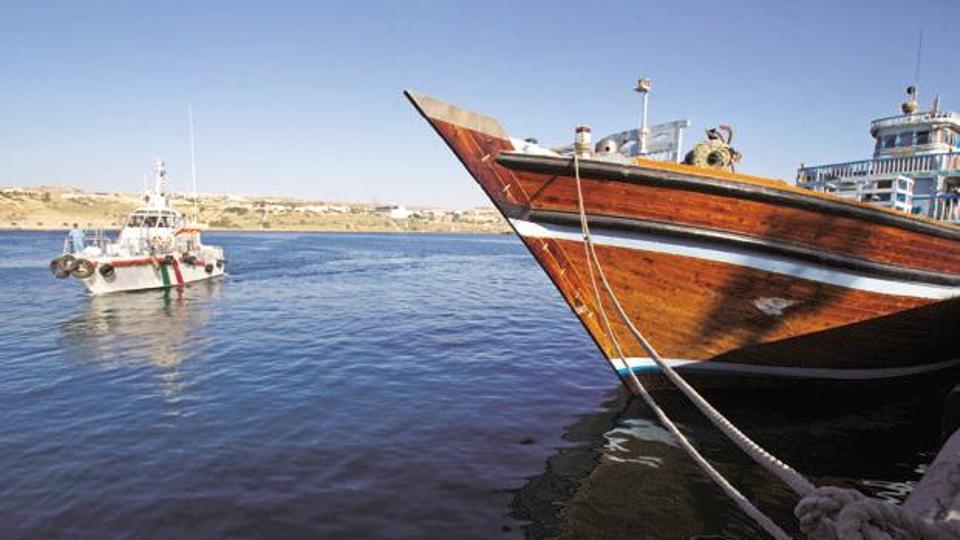Why Chabahar Agreement Is Important for Iran?

EghtesadOnline: Ever since Iran proposed the Chabahar Port development project to India, several articles and papers have been published in the Indian media.
Analysts have interpreted the tripartite agreement, signed by India, Afghanistan and Iran in May last year to develop the strategic port and build a transport-and-trade corridor through Afghanistan that could halve the time and cost of doing business with Europe, based on their ideological standpoints.
Notwithstanding the ideological rift, the Indian factor looms large over their interpretation while other aspects get overshadowed. Iran’s quest for developing Chabahar falls in the latter. An article published by US-based think tank Eurasia Review has sought to analyze the significance of Chabahar from the Iranian perspective. Excerpts follow:
Chabahar, Iran’s only oceanic-port and a coastal city and an ancient trading center, is back in the limelight–after years of oblivion–following the Chabahar agreement. It is Iran’s only port with direct access to the Indian Ocean and 800 km closer to Afghanistan than Pakistan’s Karachi Port, Financial Tribune reported.
The port is located in Sistan-Baluchistan Province that has an area of 187,500 sq km. It is one of the largest provinces of Iran, sharing a 1,600-km joint border with Pakistan and Afghanistan with a coastal boundary of around 300 km.
Iran’s Call for Engagement
The economic consideration in Iranian policymaking, which used to be subservient to political ideology, is beginning to assert itself. Conservative ideologies are giving room to a moderate agenda. The victory of President Rouhani in the recent election is a big boost to the reformist agenda. The Chabahar agreement is Iran’s call for “engagement”.
The agreement, if realized, could be a breather for Iran’s limping economy that has an unemployment rate of 12.4%. The vital aspects of agreement include the development of Chabahar Port and a trade corridor and free trade zone. It entails massive foreign investment that has the potential to offset years of stagnation for Iran in general and the province in particular.
A World Bank study reveals that gains from the easing of sanctions are largest for Iran, as it would lead to an increase of per capita welfare of 3.7%.
Sistan-Baluchistan fares poorly in comparison to other provinces of Iran. However, with the reformist agenda gaining currency, the region is viewed as an answer to Iran’s stagnating economy. Security considerations have given way to economic logic.
Chabahar provides Iran access to the Indian Ocean. It is Iran’s only deep water port and will be able to handle cargoes of 2,50,000-ton vessels where Bandar Abbas can handle only up to 100,000 tons. As of now, cargoes in 250,000-ton ships, which are the international norm, are trans-shipped from Dubai.
Prospects of Transit Hub
The Chabahar agreement could help offset the ills of sanctions era. Apart from accruing economic benefits, it will also boost Iran’s stature in South Asia as well as the Arab world.
The implementation of the Chabahar agreement would make the region a transit hub, since major economic corridors like the International North-South Transport Corridor can also pass through it. It would further diversify Iran’s economic engagements and dilute the quasi monopoly of Chinese and Russian firms on crucial sectors like crude oil and petrochemical production.
Post-embargo, the Indo-Iranian trade relation is witnessing an upward trajectory. India is Iran’s second largest export destination.
Indian exports to Iran too have gone up. Notably the import of items like iron and steel, minerals, fuels, iron ores, etc. have shown a tremendous surge in the current fiscal year.
Given India’s emphasis on the manufacturing sector, the import of aforementioned item is bound to increase by leaps and bound, opening a door for Iran to earn much needed forex. In this context, Chabahar Port best serves the Iranian purpose by linking it to India’s western coast.
Oil is another vital component of the Indo-Iranian trade relationship. At the bilateral meeting in 2016, Indian Prime Minister Narendra Modi expressed willingness to double oil imports. As of May 2017, Iran replaced Iraq as India’s second biggest oil supplier. Imports from Iran rose to 647,000 barrels per day in February this year.
Reports suggest that the proposed corridor would reduce transportation time by 50% and transportation cost by 60%. Thus, Iran is all set to become a transit hub.
The Chabahar agreement has the potential to offset the bottlenecks in Iranian economy and restore it to pre-sanctions level.


